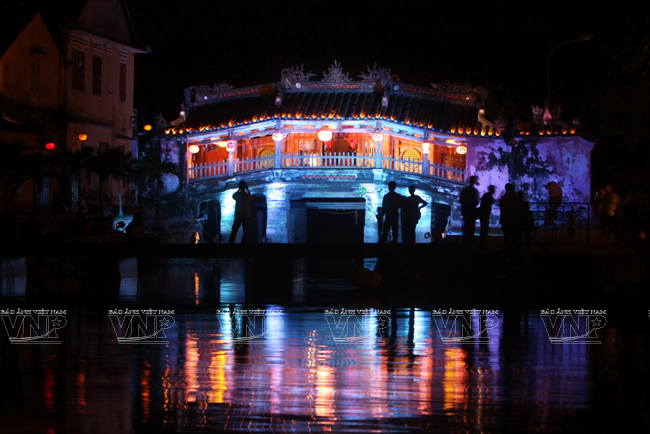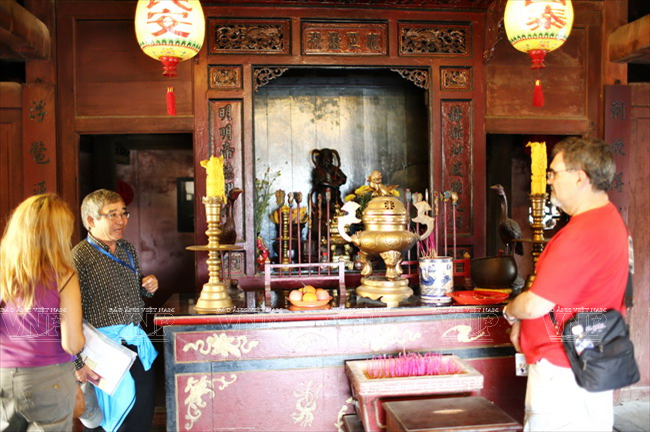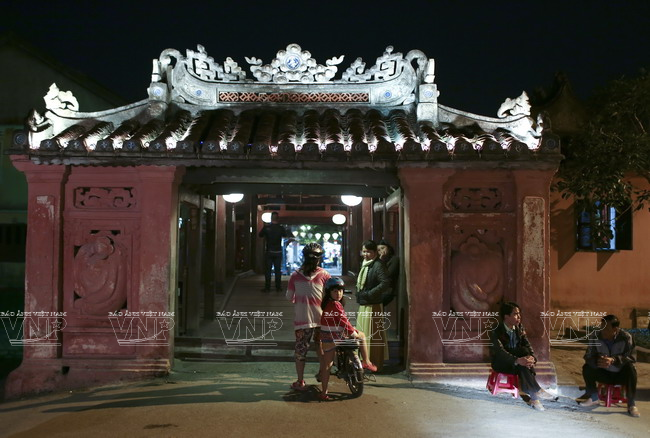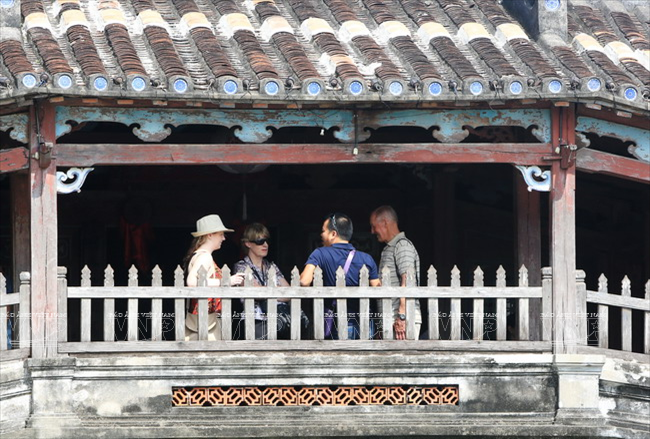Existing for over four centuries, Chua Cau (the Pagoda Bridge) is one of the most iconic attractions in the ancient town of Hoi An.
Chua Cau is considered the “heart” of the ancient town of Hoi An in the central province of Quang Nam. It is a beautiful historical piece, featuring the cultural and architectural exchange between Vietnam and Japan. It was built near the Hoai River in the 17th century with donations from Japanese merchants. Therefore, Chua Cau is also called “The Japanese Bridge”.
Japanese legend has it that there was a monster in the sea namely Mamazu. Its head was in Japan, its tail in India and its back crossed Hoi An. The sea monster often caused earthquakes in Japan and Hoi An also was not peaceful. To constrain the monster, the Japanese built the bridge to worship the genies of monkeys and dogs at the two bridgeheads and the bridge was considered a sword plunging into the back of the Mamazu monster that made it unable to wave its tail, causing earthquakes.
The bridge has special architecture with a wooden pagoda roofed with yin-yang tiles on one side. At the main entrance of Chua Cau, there is a large plate embossed with three Chinese letters; “Lai Yuan Qiao”, meaning “The Welcoming Bridge”. This name was chosen by Lord Nguyen Phuc Chu during his visit to Hoi An in 1719.

Chua Cau, one of the relics with distinctive architecture,
was built in the 17th century and is considered the “heart” of the ancient town of Hoi An.

In 1719, Lord Nguyen Phuc Chu visited Chua Cau and named it “Lai Yuan Qiao”.

A statue of Bac De Tran Vo who is the protector god of the region is worshipped
at the main hall of the pagoda on the bridge.

At the two bridgeheads stand two wooden adoration statues: a dog and a monkey.

Chua Cau connects the two streets of Tran Phu and Nguyen Thi Minh Khai in Hoi An.

Chua Cau is a “must see” destination for foreign tourists to Hoi An. |
Both the bridge and the pagoda are made from wood with red-lacquer and are elaborately carved. The pagoda faces towards the Hoai River. At the two bridgeheads stand two wooden adoration statues: a dog and a monkey. It is said that the construction of the bridge begun in the year of dog and was completed in the year of monkey. According to Japanese belief, these animals are considered to be sacred animals which are able to control the sea monster. Inside the pagoda, there is no statue of Buddha, except for a wooden statue of Bac De Tran Vo, the protector god of the region who brought happiness and wealth to the locals, at the pagoda’s main hall.
Despites being restored several times, Chua Cau has been kept intact with architectural and cultural features. It now looks more sparkling with colourful lanterns at night and has become a place for many cultural activities of Hoi An and Japan, such as the night to commemorate victims of the Tsunami in Japan in 2011, the Kimono fashion show in Hoi An and the Japanese cuisine festival.
Masami Nakamura, Director for project development of Apex Vietnam Travel Corporation, said that Chua Cau is a “must see” among destinations in tours held by the corporation for Japanese tourists to Hoi An because it is an imprint in the trade and cultural relations and cooperation between Vietnam and Japan. Furthermore, Chua Cau, one of five beautiful places of Vietnam, is printed on the Vietnamese banknote of 20,000 dong.
Today, Chua Cau stands as a symbol of Hoi An and remains as aesthetically pleasing as it was when it first opened.
Story: Thong Thien - Photos: Hoang Ha
danghuyen